A range of teacher professional learning programs will be developed to accompany the Biodiversity of the Western Volcanic Plains online outreach...
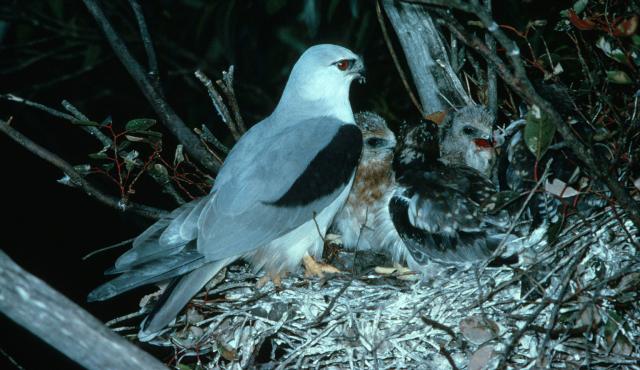

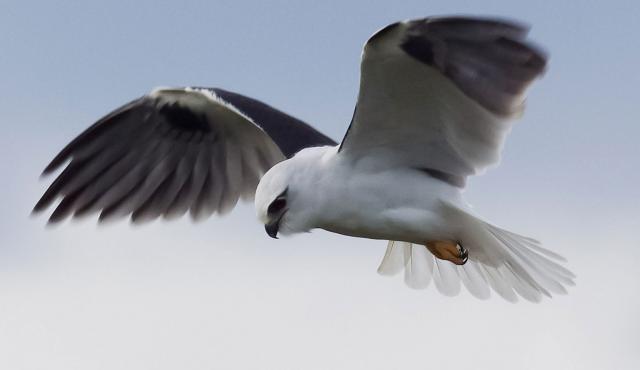
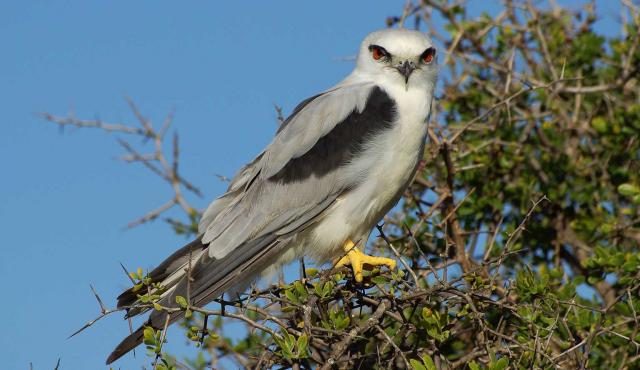
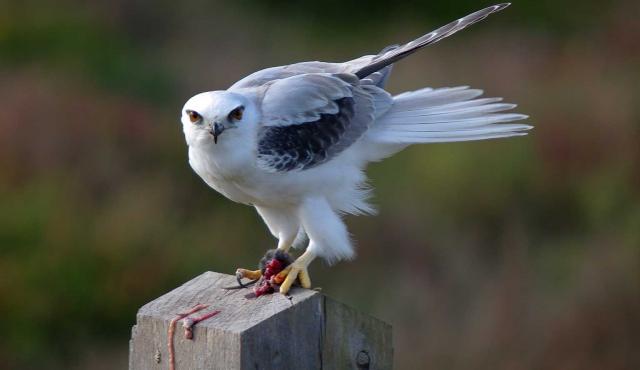
Black-shouldered Kite
Elanus axillaris
These birds form monogamous pairs which remain together for the year. Both sexes build a nest on a high tree, bridge or power pole. Breeding season is usually from April to December or whenever prey is abundant. Clutch size is 2-4. The female incubates the eggs for 30-34 days and the young leave the parents after a month.
| Details | Description |
| Type | Bird |
| Group | Raptor |
| Identifying Characteristics | |
| Distinctive Markings | Black shoulder patch. Distinctive black, comma shape above and behind the red eye. |
| Diet | Carnivore. Feeds mainly on rodents, in particular the introduced house mouse. Also eats insects, especially grasshoppers. |
| Habitat | Occupies treed grasslands, farms, roadsides, vacant wastelands of urban and coastal areas. Also found in heaths or saltbush with sparsely scattered trees. |
| Native Status | Native to Australia |
| Sounds | Short, piping "siep" repeated every 5 seconds. Husky "scrair" repeated every 5-10 seconds. Contact call "chek, chek, chek". Distress call is an aggressive "kik - kik - kik -". |
| Taxonomy | |
| Phylum | Chordata |
| Class | Aves |
| Order | Falconiformes |
| Family | Accipitridae |
| Genus | Elanus |
| Species | axillaris |
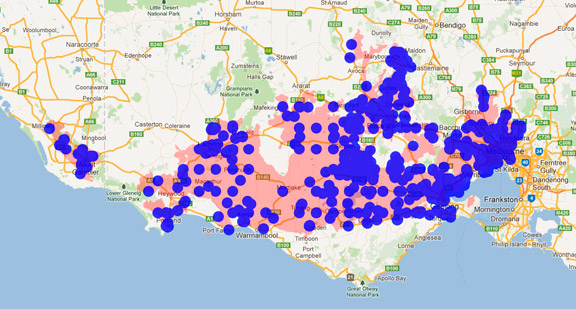
Distribution maps indicate current and historic locations where species have been sighted.
Source: Atlas of Living Australia
| Conservation Status | |
| DEPI Advisory List | Not listed |
| FFG Act | Not listed |
| EPBC Act | Not listed |
The conservation status of species is listed within Victoria and Australia.
The Department of Environment and Primary Industry (DEPI) Advisory List consists of non-statutory advisory lists of rare or threatened flora and fauna within Victoria.
The Flora and Fauna Guarantee Act 1988 (FFG Act) lists threatened species in Victoria. Under the Act, an Action Statement is produced for each listed species.
The Environment Protection and Biodiversity Conservation Act 1999 (EPBC Act) is the Australian Government’s key piece of environmental legislation, listing nationally threatened native species and ecological communities.



